Mastering Google’s SGE: 5 Essential Tips for Success in the New AI-Powered Era of Search
Google’s Search Generative Experience (SGE) marks a major change in its 25-year search history. While there are many uncertainties ahead, one thing is certain: this AI-driven search introduces a new level of complexity for gaining visibility and traffic.
And it’s not just SGE, we need to think beyond that. SEO has been incredibly volatile. Google has hit us with its helpful content updates, spam updates, and never-ending core algorithm updates.
With all these algorithm updates and Google’s new AI-driven approach to search, there’s one crucial thing to understand: To be successful in this new environment, you first must be successful in your current environment.
Undoubtedly, SGE will represent one of the biggest changes to search in our professional careers, but we are not clear about the clicks being more difficult to obtain. Zero-click search volume has been increasing for quite some time. SERPs have become more complex, diverse, and personalized. We are no strangers to constant changes in the SERP affecting our ability to capture shelf space.
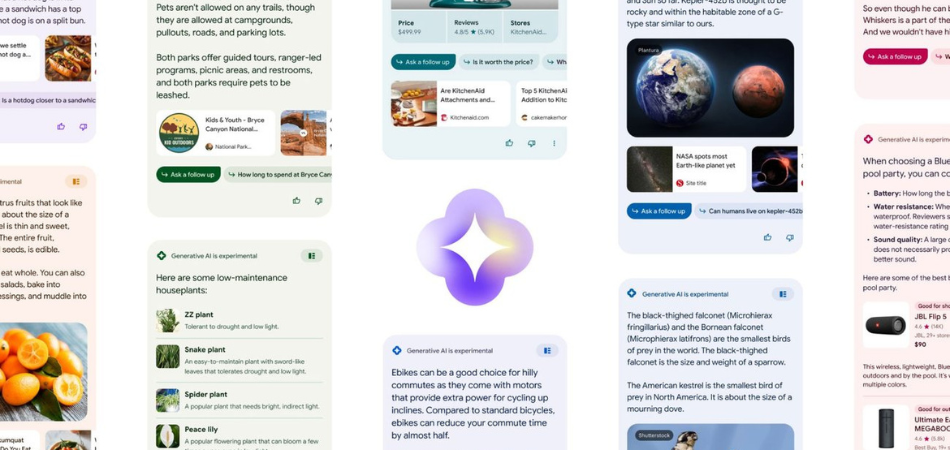
Some of the strategies employed in search now can be applied to assist you in preparing for the future of SGE. After all, some industry studies show that if you’re ranking in position 1 or 2 now, Google’s SGE AI snapshot is more likely to refer you.
However, the bar keeps becoming higher. Your future success will depend on how well you can produce content that goes beyond what anyone can generate with a ChatGPT or Claude prompt, given the increasing use of AI in marketing.
The great news is the fundamentals of search are still relevant. All of the elements should be well-known to you, even though the formula may change slightly.
✅ Get Mentioned Across the Web
✅ Create Content Featuring E-E-A-T
✅ Cover Your Topics Thoroughly
✅ Integrate Content Formats AI Hasn’t Nailed Yet
✅ Optimize Your Conversion Rates and User Experience
1. Get Mentioned Across the Web
My first advice is to try to improve your internet reputation by obtaining mentions or links to your website from reliable online sites. Google’s documentation on SGE shares that a critical part of how it works is corroborating its AI responses with “reliable sources.” Therefore, one of the ways Google determines whether you can offer useful information is by looking for mentions or links from reliable and trustworthy websites.
Now, I know there’s been a lot of news and chatter lately about people overestimating the value of links. But direct quotes from Google’s Gary Illyes state that links ARE essential, even if they aren’t a top three factor: “Links are important, but not as important as people think.”

Links are valuable and mostly used signals for Google. It’s just a matter of approach. Purchasing spammy links is not the solution. It all comes down to proving that you deserve that signal of popularity.
But one mistake I noticed that content marketers make all too often is trying to create the same content their competitors or the leaders in the space have already created. After that, they just have to wait for respectable, authoritative publications to begin mentioning them. They have just imitated preexisting content.
Instead of approaching your content marketing in that manner, consider what will actually be interesting and valuable to your audience. It’s likely that you will need to reduce the amount of content you produce in order to put quality over quantity and produce something that is both superior and unique from what is already out there. Consider thorough, multi-chapter instructions that include rich media like animated gifs, personalized images, interactive tests, and videos.
Alternatively, consider using a resource that is unique to you: your own data. For instance, For an example, If you run a clothing boutique and see your largest category growth in gender-neutral clothing this year. That trend might be interesting to people.
Maybe you’re a respectable jewelry reseller that buys and sells expensive watches, and you notice that as the economy improves, more individuals are visiting your website to make purchases than to sell. This has the potential to be topical and interesting.
Those are just a couple of examples to get your wheels turning. I hope you are able to visualize where I’m going with how key your unique data sets can be to set your content apart.
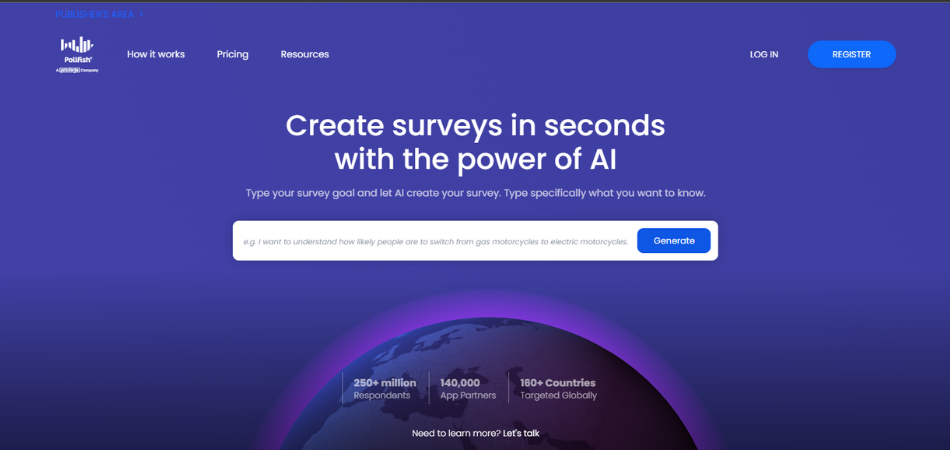
Here are four different ways that we can leverage data to set our content apart at NP Digital:
✅ Data studies: You can utilize data studies to make the most of your internal data or even to produce newsworthy data-driven assets by analyzing and re-presenting public data sets.
✅ Regional data rankings: Regional data rankings are similar to data studies in that they are meant to create discussion at the local, state, or regional levels.
✅ Contests and sweepstakes: Public sweepstakes and contests provide value to create excitement and interest.
✅ Surveys: Use a surveying platform such as Pollfish to gather responses to the topics you want to ask and build a distinctive data collection that will help distinguish your content.
2. Create Content Featuring E-E-A-T
Google’s SGE documentation states, “We hold SGE to an even higher standard when it comes to generating responses about certain queries where information quality is critically important.” This, and the fact that Google recently added the newest “E” for “Experience,” shows us that E-E-A-T will continue to be a critical framework for content creation.
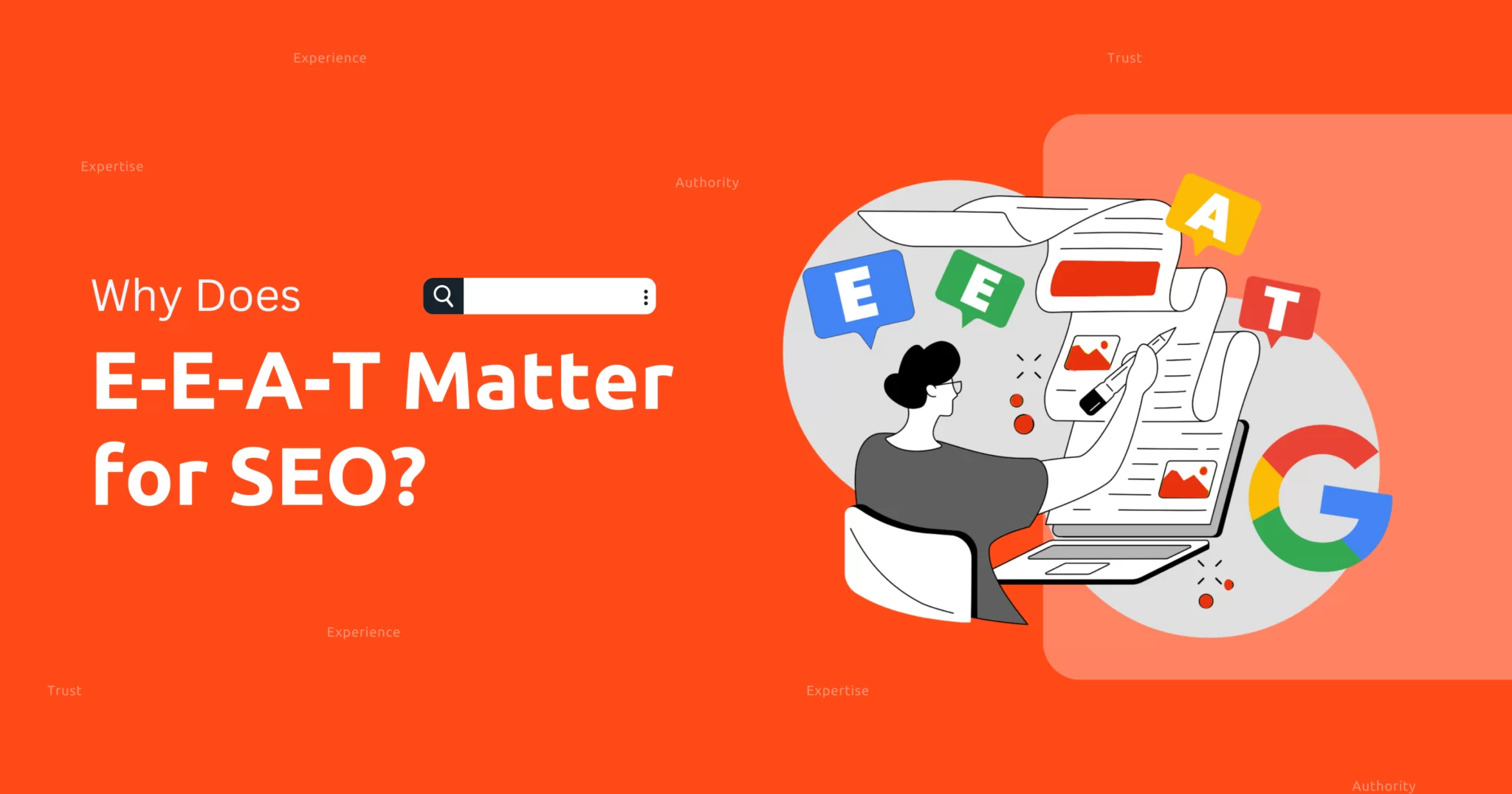
So, let’s talk about the basics: author bios. Adobe, a brand I’ve seen dominating in SGE, goes beyond author bios. Check out this page here, where they have included the food photographer’s name in the page title, URL, and subheading. In addition, they include video interviews with Alex in which he talks about his methods for taking food photos, his tastes and style, and other topics. Finally, they weave in inspirational quotes from him throughout the page.
This is an example of taking user-generated content (UGC) to a new level. It’s helpful, inspirational, and incredibly user-centric. They even have downloadable photo editing presets that Alex created. This is one of the perfect examples of a brand partnering with an expert to develop authentic, high-value content for their audience. If you’re a food photographer, you don’t just get inspired by Alex’s story—you get an editing preset he created to help speed up your food photo editing. It’s genius.
You’re not alone if you’re unsure of how you compare to rivals in terms of E-E-A-T aspects or if you know you need to get better but don’t know where to start. you’re not alone. E-E-A-T is easy to talk about, but since it’s vast and subjective, it can be confusing to strategize on and challenging to measure.
That’s why I recommend leveraging a grading rubric where you look at things like the inclusion of author bios, onsite reviews, and all other factors you know play into E-E-A-T. Then, grade yourself against top-ranking competitors and use your gaps to roadmap the key areas where your strategy falls short. That way, you know what you need to accomplish, and that makes improving your E-E-A-T tangible.
03. Cover Your Topics Thoroughly
To establish yourself as an authority in particular subjects, it’s crucial to provide comprehensive coverage. Addressing all inquiries related to the topic demonstrates your expertise, reinforcing to your audience that you are a knowledgeable authority in your field.
If you want to renovate your home, you should consider hiring a general contractor. You will be concerned if they can discuss paint and flooring with you but look away when you ask about drywall and cabinets. You’ll probably go to someone you know can handle every part of your makeover. Use the same methodology for your content plan.

Image credit goes to NeilPatel.
Furthermore, don’t undervalue the significance of long-tail keywords. Long-tail keywords will see a rise in search volume and become even more important as people grow acclimated to searching more conversationally (a crucial component of Google’s SGE) and as the search engine gets better at answering these kinds of questions. Head keywords will keep getting less relevant and in volume. to decrease in volume and relevancy.
Therefore, avoid being like some of the marketers I’ve encountered who disregard requests simply because they receive less inquiries than they think are relevant. You don’t want to pass up the chance to reach more qualified website visitors and those who are likely further down the funnel. Moreover, you can’t cover your topics thoroughly if you’re discounting long-tail keywords.
I observed that Google was returning results for a website called Trips with Tykes, which I had never heard of, for a variety of inquiries. Meantime even ranking multiple times within the same AI snapshot for specific terms. So, I started assessing why that might be. Here’s what I saw:
✅ The author is a mom with two childrens, and they have done a lot of traveling and adventuring. She’s most certainly got the E’s in E-E-A-T covered.
✅ She also covers the topic of traveling with kids thoroughly. Her blog about car seats on airplanes was part 1 of a multi-part series. She has the scoop on whatever you need, and she’s also got airline-by-airline level details in her content.
✅ She had such a great content that met my needs as a nervous first-time mom traveling across the world. She answered questions in her content that I didn’t even know to ask, to be honest.
So, Trips with Tykes has stuck with me Because it demonstrates that you don’t need to be as big as Adobe to get E-E-A-T right and have Google reward you.
You also don’t need to rely solely on creating new content, either. Leverage the below framework to get more out of the content you’ve already invested in creating. It’s an excellent framework for taking content from good to great. It’s also a helpful framework for finding useless, low-quality content that’s diluting your domain and pruning or redirecting it. So, as you’re thinking about new content creation, make sure you’re taking a hard look at your existing content, too.
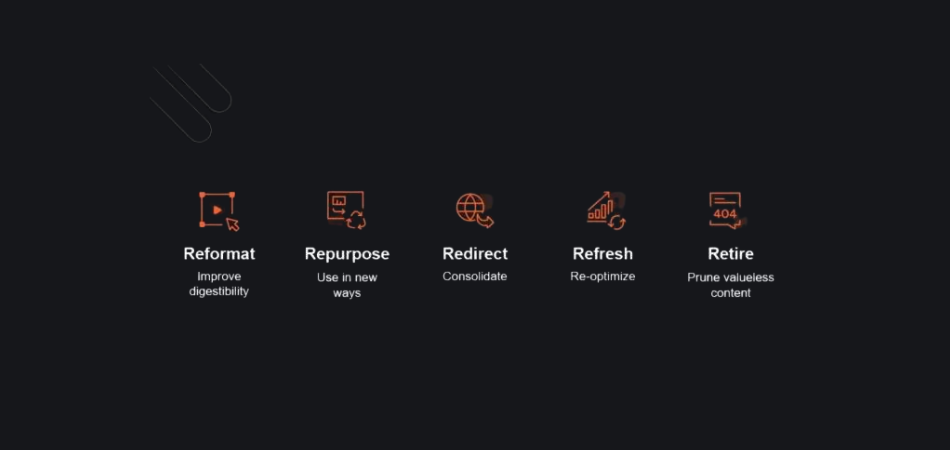
✅ Reformat: Improve digestibility, structure, and readability. Consider whether a new format altogether, such as video, might be an opportunity to better engage or reach new users.
✅ Refresh: Refresh content to better target keyword rankings your content has picked up and align with user intent for those keywords.
✅ Repurpose: Use this content in new ways, such as across other channels.
✅ Redirect: If your content is competing for visibility and diluting your keyword targeting strategy, combine it with its competing content and leverage a redirect.
✅ Retire: No conversions, links, traffic, value, and use across other channels? Retire the content.
4. Leverage Content Formats AI Hasn’t Nailed Yet
Utilizing captivating rich media formats might aid in differentiating your content. Custom images, infographics, and quizzes are all beneficial, but video is particularly so. As everyone knows, one of the most important search engines in the world is YouTube. Playable videos are also included in SGE’s AI snapshots. Consequently, using video to promote audience engagement is a great idea. Additionally, it’s a chance to leverage a content structure that is currently difficult for humans to generate using AI tools.
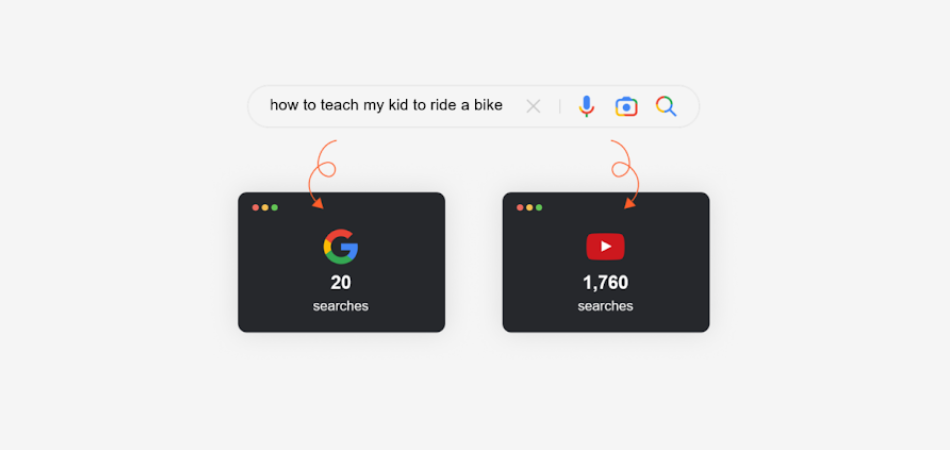
Making videos is another way to increase the amount of traffic that is received. For example, the volume of searches on YouTube for “how to teach my kid to ride a bike” is 80 times higher than that of Google. To find these opportunistic questions, use vidIQ or AnswerThePublic. Then, use video to enhance and augment your text-based content strategy.
5. Optimize Your Conversion Rates and User Experience (UX)
It can be challenging to monitor, measure, and plan around what’s happening without SGE data in Google Search Console or third-party solutions. Thus, I strongly advise allocating a portion of your time and resources to something you can manage: the user experience that a user has on your website.

Optimize your conversion rates and invest in your UX now because once SGE fully rolls out, it will almost certainly cause a dip in traffic for many websites. With the rise in SGE and increase in long-tail, your website traffic may become more qualified over time. But if your traffic volume is substantially lower, you must do everything possible to offer an excellent onsite experience and drive people to convert at the highest rate possible.
When Mozilla increased their page speed by 2.2 seconds, Firefox download figures rose by 15.4%—that’s 10 million per year.
🔔 Wrap Up!
Google’s introduction of SGE leaves us with a lot of uncertainty, a healthy amount of skepticism, and a decent dose of fear. But leveraging my tips above will help you both in today’s environment (as volatile as it is) and in the AI era of search that’s coming in hot whether we like it or not.
Focus on creating unique and exhaustive E-E-A-T content in your niche to become an authority across related topics and provide helpful resources for your users. This enables you to earn valuable mentions and links from across the web, which, for better or worse, will continue to be a factor for SEO success.
In the face of the upcoming AI era in search, it’s crucial to emphasize creating content that stands out. Incorporate different formats like video to distinguish your content from the increasing volume of AI-generated material. Additionally, allocate resources and budget to enhance and control your website experience, recognizing that this is a factor within your control for SEO success. Start implementing these strategies today to stay ahead of the competition and boost your online presence.

